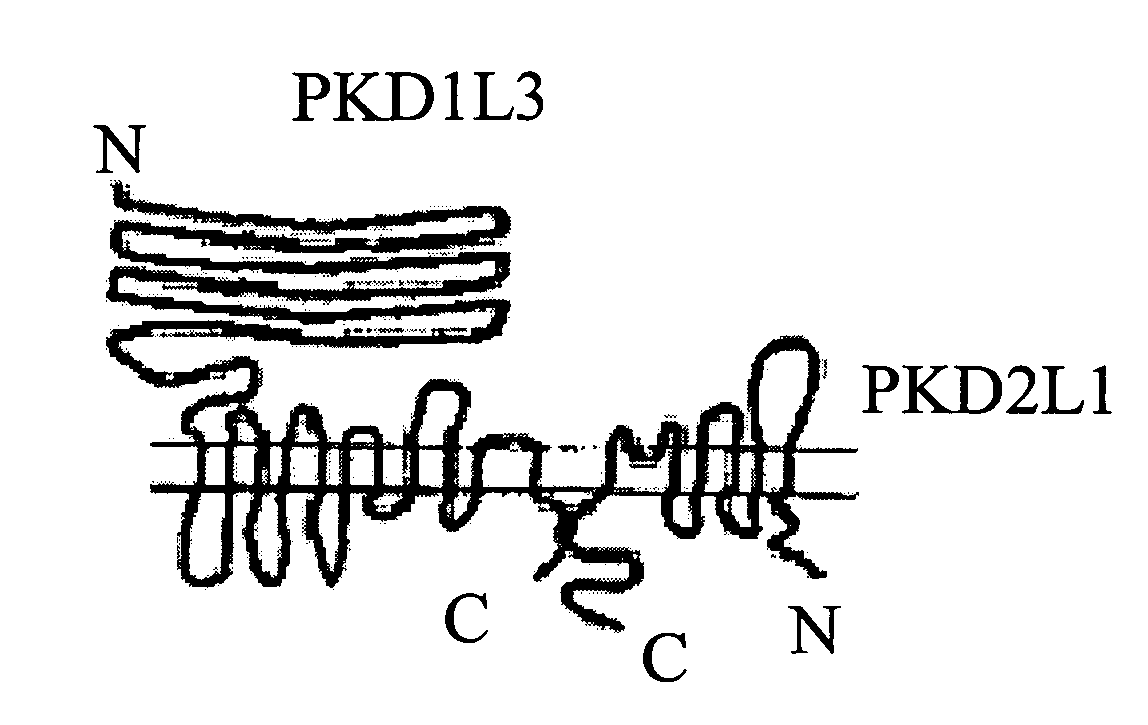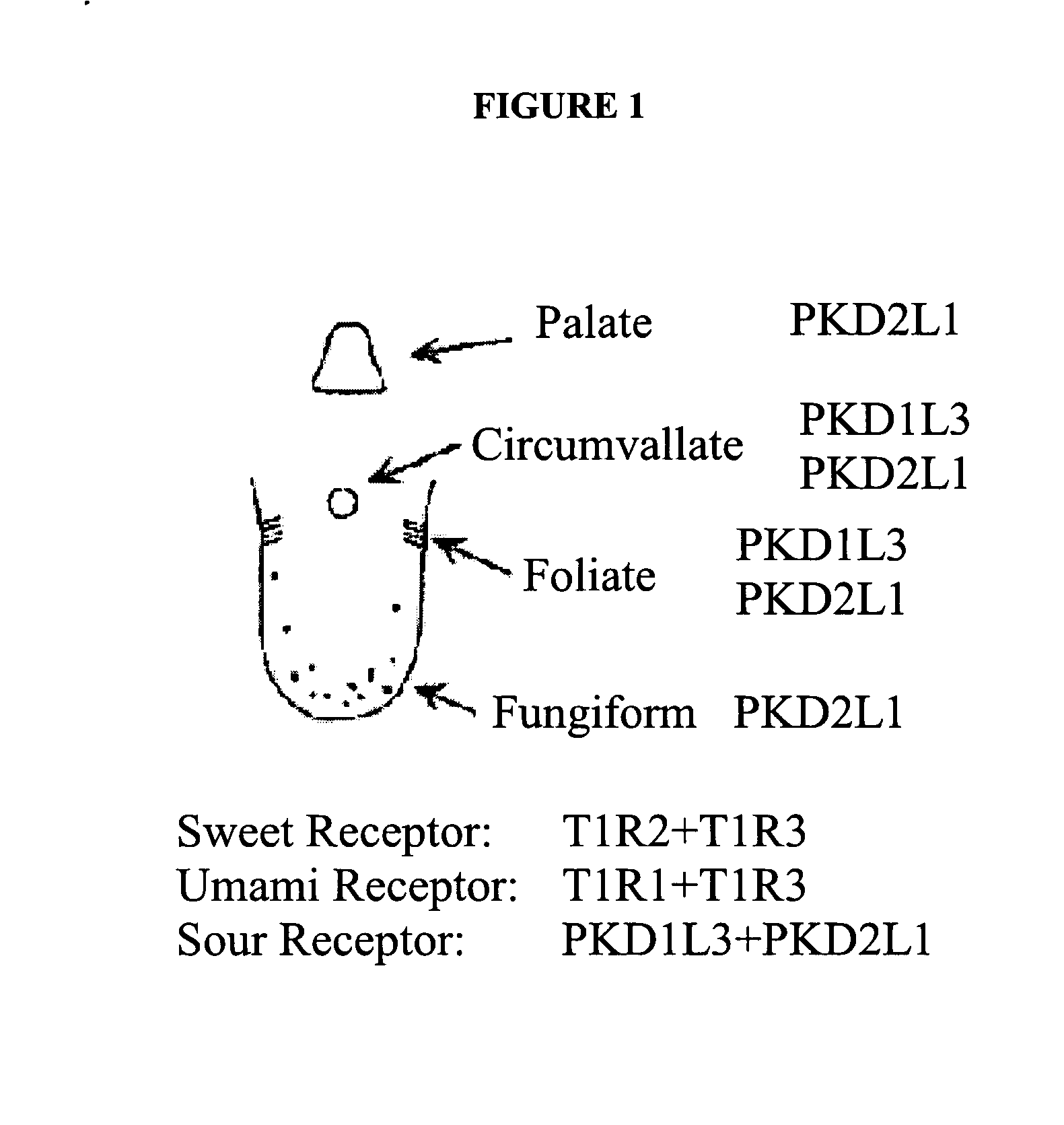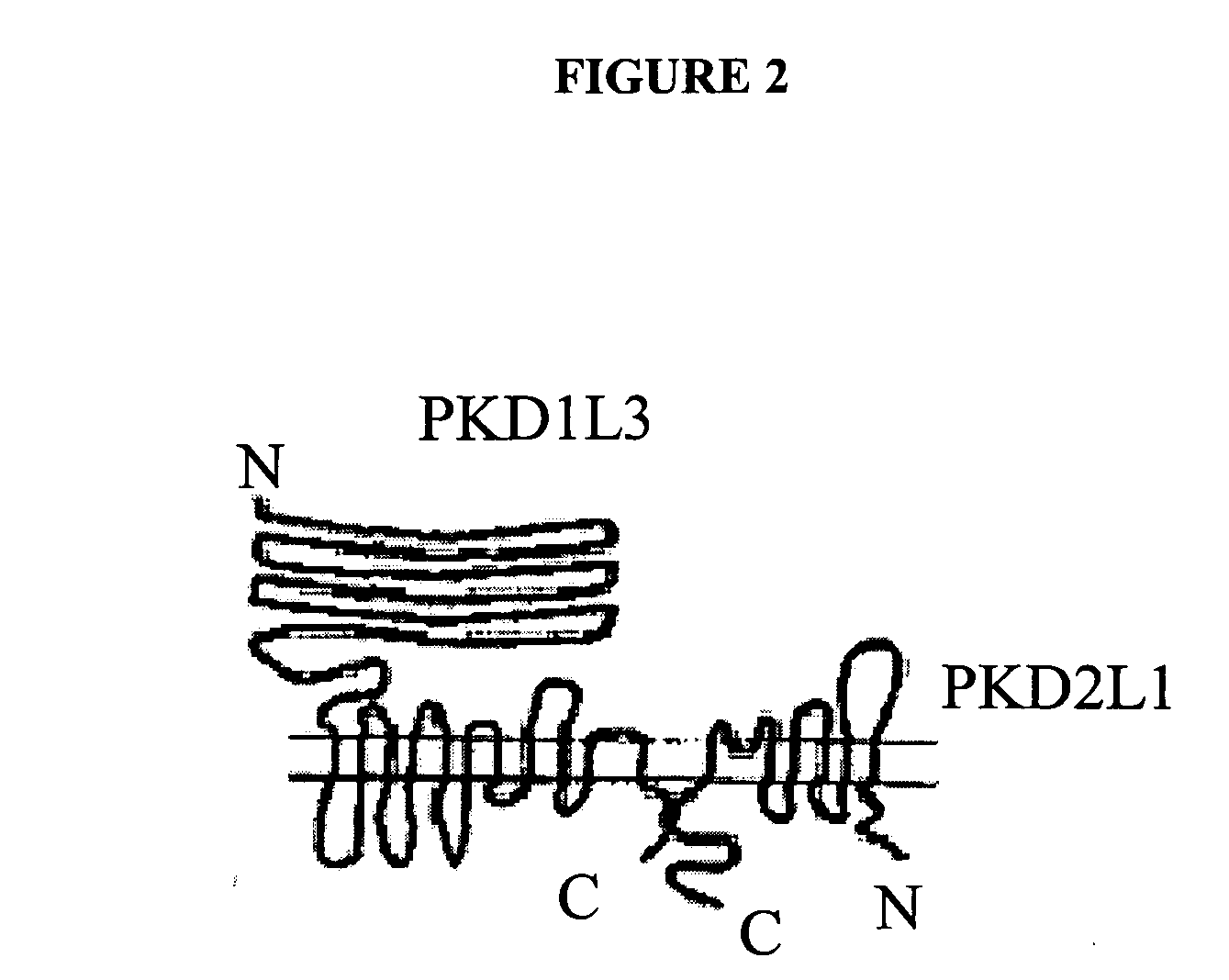Sour taste receptor compositions and methods
- Summary
- Abstract
- Description
- Claims
- Application Information
AI Technical Summary
Benefits of technology
Problems solved by technology
Method used
Image
Examples
example 1
In Situ Hybridizations
[0057] Procedures for non-radioactive hybridization were previously described (Saito et al., 2004, Cell 119:679-691). Briefly, digitonin (Dig) labeled RNA probes were hybridized, washed and detected by alkaline phosphatase conjugated anti-Dig antibodies followed by incubation with NBT / BCIP. For two-color fluorescent in situ hybridization, RNA probes were labeled with Dig or FITC (Roche). FITC labeled probes were detected by horse radish peroxidase (HRP) conjugated anti-FITC antibodies followed by TSA-Cy3 (Perkin-Elmer). HRP was inactivated by incubating with PBS containing 1% hydrogen peroxide for 30 min., and Dig labeled probes were detected by HRP conjugated anti-Dig followed by TSA-FITC.
example 2
[0058] Protocols used for immunoprecipitation were previously described in Saito et al, 2004.
example 3
Cell Surface Protein Expression
[0059] Protocols used for cell surface expression of proteins were previously described in Saito et al., 2004.
PUM
 Login to View More
Login to View More Abstract
Description
Claims
Application Information
 Login to View More
Login to View More - R&D Engineer
- R&D Manager
- IP Professional
- Industry Leading Data Capabilities
- Powerful AI technology
- Patent DNA Extraction
Browse by: Latest US Patents, China's latest patents, Technical Efficacy Thesaurus, Application Domain, Technology Topic, Popular Technical Reports.
© 2024 PatSnap. All rights reserved.Legal|Privacy policy|Modern Slavery Act Transparency Statement|Sitemap|About US| Contact US: help@patsnap.com










